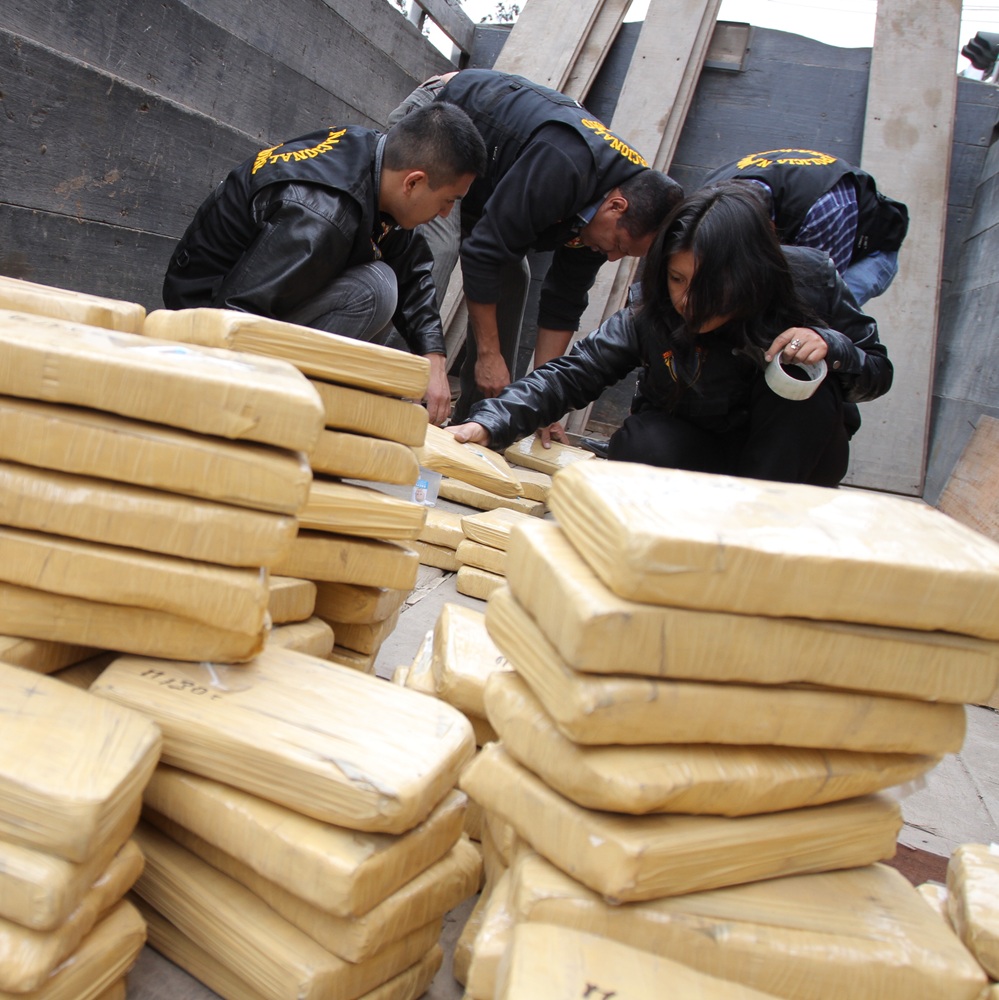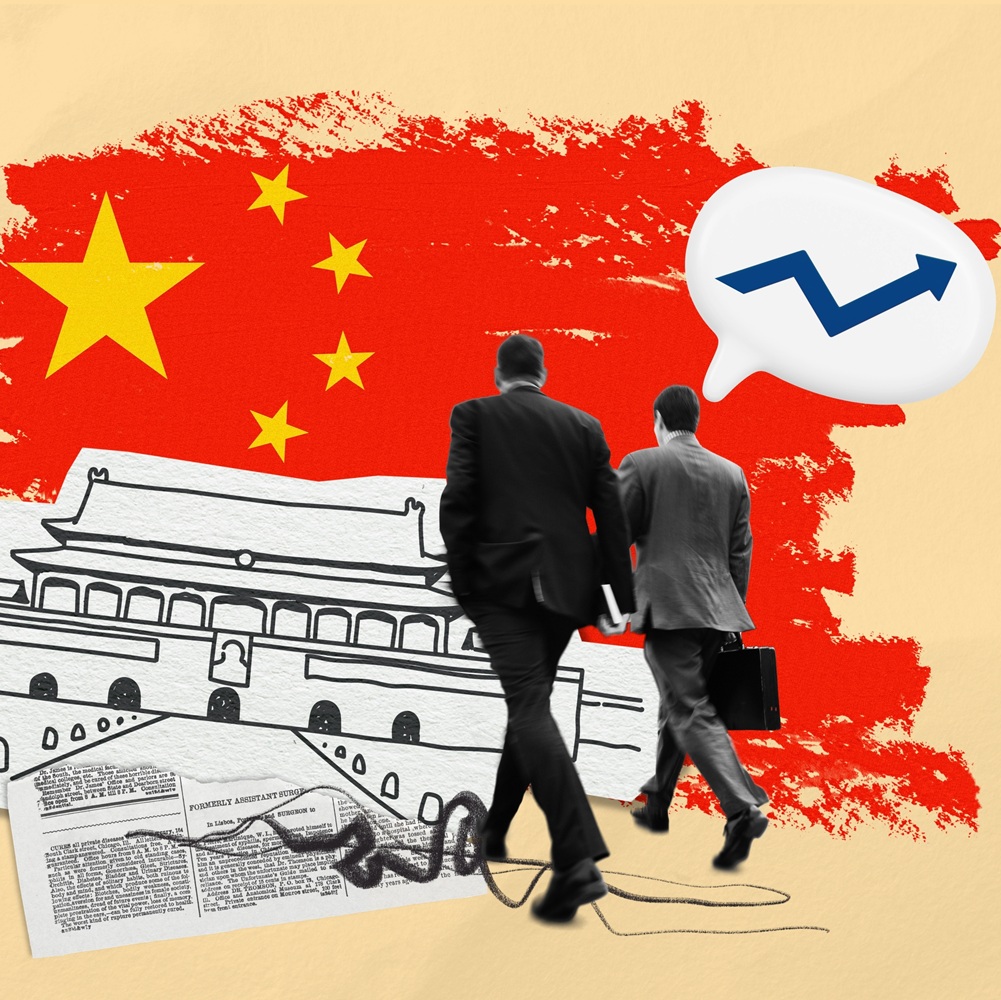
The high-Tech Cold War: US-China Rivalry and the Battle for Global Innovation
by Eraj Farooqui
Since the 1970s, the US-China relationship has been defined by a combination of cooperative and competitive objectives. Competitive interests, however, have prevailed, resulting in a rising competition between the two countries. (Pillsbury, 2015) Candidates in the 2016 presidential election treated China as an adversary, with Donald Trump's China-bashing becoming a trademark of his campaign. Rivalry with China has become the organising premise of American foreign policy under Trump's administration. Republicans and Democrats differ on most issues, but they agree on the need to change America's approach towards China. This has sparked speculation about whether the US-China relationship has devolved into a possibly violent clash or a new Cold War. The Trump administration has openly announced a shift in US policy towards China, with Matt Pottinger claiming that the US has modified its China policy to emphasise competition. Former Vice President of Trump Pence stated that the United States will combat China aggressively on all fronts, including economic, military, diplomatic, political, and ideological. This statement is regarded as "the declaration of a new Cold War." (Pence’s, 2018) Former Trump advisor Stephen K. Bannon has declared economic war on China, blaming its exports on the American working and middle classes. Many people agree that China is economically dominating America, and the US government and industry have done little to solve the situation. Globalists such as Madeline Albright, Tom Friedman, and Fareed Zakaria have grown increasingly concerned about China's lack of reciprocity in economic dealings with the United States. David Lampton, a pro-engagement advocate, has criticised China's WTO membership for increasing bilateral trade surpluses. (Staff R. , 2017) The second stage began when Donald Trump determined to halt Chinese commercial and technological advancements, renouncing liberal internationalism in favor of a new grand strategy against China. (Drezner D. R., 2021) The growing view of Xi Jinping as a harsh leader with an aggressive foreign policy contributes to the sense of an ideological clash. China and the United States have initiated an unconstrained war for bilateral, regional, and global dominance, ushering in a new age of strategic conflict that has yet to be fully defined. (Rudd, 2020) The US-China conflict appears to be a Cold War, and any return to a pre-2017 environment of "strategic engagement" with Beijing is no longer politically viable. (Rudd, 2020)However, (Zakaria, 2019) does not feel that the liberal international order has deteriorated as much as is widely assumed, and China is far from a grave threat to the liberal international system. Despite the best intentions of both countries, the US-China relationship is more likely to devolve into economic and military competition. (Lake, 2018) China's strategy aims to modernize its industrial capacity and secure its position as a global powerhouse in high-tech industries. The strategy aims to reduce reliance on foreign technology imports, increase Chinese-domestic content of core materials, and upgrade its dominant position in major strategic industries, such as pharmaceutical, automotive, aerospace, semiconductors, and most importantly, IT and robotics. The 14th Five-Year Plan of China (2021-2025) emphasizes high-quality growth driven by green and high-tech industries, service sectors, and domestic consumption. The US judged China's old growth model as generating a somewhat balanced win-win relationship between the two economies, based on "comparative advantage" and "cost-benefit" evaluations. However, Beijing's new growth model, particularly the "Made in China 2025" aspiration, is perceived as competition with the US service and knowledge economy, resulting in trade and high-tech warfare between the two countries since 2018. (Bernal-Meza L. X., China-US rivalry: a new Cold War or capitalism’s intra-core competition?, 2021) The US business community, once a staunch supporter of engagement, has complained that China has hacked American industrial secrets, created barriers to American firms investing in China, enforced regulations that discriminate against foreigners, maintained high tariffs that should have been reduced decades ago, and blocked American Internet businesses. In a rare joint statement by the allies, the intelligence chiefs of the Five Eyes countries convened on Tuesday to charge China with stealing intellectual property and using artificial intelligence to hack and spy on the countries. (Bing, 2023) The officials from the United States,Britain,Canada,Australia and Huawei,for example,has tight relations with the Party and has been accused of stealing intellectual property as well as spying on Western countries. The United States is concerned about Huwaie's 5G supremacy, which is why it’s CEO, Meng Wan Zhou, was arrested in Canada. Indeed, its importance was highlighted when the United States imposed restrictions restricting, and in some cases prohibiting, Chinese telecoms operations in the American market, and launched a global effort to persuade friends, partners, and others to follow suit. Thus, while President Trump allowed one company (ZTE) a respite from what appeared to be a ban that would put it out of business, later American limitations on Huawei threatened to destroy China's premier international technology company's global viability. (Goldstein, 2020) When it comes to both green technology and chips, it is now at the center of American politics. The CHIPS Act, approved by Congress last year, included $52 billion in grants, tax credits, and other subsidies to stimulate American chip production. That's the kind of industrial policy that would make Hamilton gape and clap. Over the next few years and decades, China will pour vast sums of money into its own industrial strategy programmes, spanning a wide spectrum of cutting-edge technology. According to one Centre for Strategic and International Studies researcher, China already spends more than 12 times as much of its GDP on industrial programmes as the United States. (BROOKS, 2023) Certain social media sites, such as Facebook and Google, are prohibited in China.In the United States, there is a restriction on TIKTOK and WECHAT. To counter China, the United States has implemented a number of statutes, including the: 1.COMPETES Act 2020.: The House Science, Space, and Technology Committee decided to advance the America Competes Act of 2022, which intends to improve America's scientific and technology efforts in the twenty-first century in order to compete with China in vital fields. The bipartisan Act is divided into eleven sections, with Division K headed "Matters Related to Trade." Trade Adjustment Assistance, Import Security and Fairness Act, National Critical Capabilities Review, Modification and Extension of Generalized System of Preferences, Reauthorization of the American Manufacturing Competitiveness Act of 2016 and Other Matters, and Temporary Duty Suspensions and Reductions are the seven sections of the Act. President Joe Biden has indicated his support for the Act, arguing that it will strengthen America's supply chains and reenergize the economy's innovation engine, allowing it to compete with China and the rest of the globe for decades to come. 2.Chips and Science Act 2022: President Joe Biden signed the Chips and Science (or CHIPS) Act into law, promising local semiconductor producers more than $50 billion to expand home output and "counter China." (Cosgrove, 2023) 3.The United States passed the Inflation Reduction Act 2022: Although China now dominates clean technology manufacturing, the Inflation Reduction Act contains provisions geared primarily at strengthening the United States' clean energy supply chain. Furthermore, the global transition to clean technology such as solar panels and electric vehicles is unavoidable and ongoing as they become more affordable than fossil-fueled alternatives and countries take action to achieve their Paris climate obligations. (NUCCITELLI, 2023) CHIP War After failing to achieve an agreement with Chinese regulators, Intel cancelled a $5.4 billion takeover deal with Israel-based Tower Semiconductor. China is one of Intel's most important markets, and on July 3, Beijing announced a license requirement for exporters of gallium and germanium, rare-earth metals used in semiconductor manufacturing. The chip war is mostly motivated by the United States' concerns about China's military exploitation of semiconductor technology. However, China's military sector has a key weakness: most of its cutting-edge applications rely on foreign technological inputs, particularly microprocessor exports. China will be the world's largest buyer of semiconductor manufacturing equipment in 2021, accounting for 26% of worldwide demand. Biden established an export license requirement in October 2022, limiting China's access to semiconductor innovations manufactured by US corporations. In July 2023, Japan officially prohibited the sale of 23 types of semiconductor equipment to China, which is significantly more widespread than the US restriction, impeding China's development of advanced chips and basic chips used in technology such as automobiles and smartphones. The Netherlands Standing Committee on Foreign Trade and Development Cooperation said in September that it will begin limiting its semiconductor technology exports to China. According to Nikkie Asia, this new legislation would prohibit the Dutch ASML from exporting innovative chip manufacturing methods without first getting government-approved licenses. (CHENG TING-FANG, 2023) These export limitations have pushed Beijing to retaliate, with China's most recent regulation on gallium and germanium shipments serving as a direct retaliation to the US' global allies. According to the New York Times Magazine, Taiwan manufactures more than 90% of the world's most advanced microchips and could risk armed confrontation if China goes on the offensive in the future. (Palmer, 2023) Former national security advisor Robert O'Brien, on the other hand, believes that in the case of an impending invasion,the US would destroy Taiwan's semiconductor manufacturers rather than allow them to fall into the hands of China. The chip battle has further pushed Taiwan into an awkward position in the changing geopolitical landscape. (Carr, 2023) The Biden administration intends to restrict shipments of advanced artificial intelligence chips designed by Nvidia to China as part of a broader set of actions aimed at preventing Beijing from gaining advanced US technologies to enhance its military. The action is intended to address regulatory gaps and limit China's access to advanced semiconductors, which might feed AI advances and sophisticated computers crucial to Chinese military purposes. Gina Raimondo, Secretary of Commerce, emphasised that the administration's goal is not to harm Beijing economically. (Alexandra Alper, 2023) In the words of Lampton, "There was a widespread public perception that the Sino-American economic playing field had been unfair to Americans, with the assertion that the American economy was hollowed out, in part due to overt and covert technology transfer to China" (Lampton, 2015) . China's new growth strategy is leading to more rivalry than complementarity in the China-US economic partnership. The fact that "China's achievement in moving up in the global supply and value chains has led to Beijing's larger share of global surplus and the reduction of the profit margin for traditional core states" has disturbed the United States. (Li X. , 2020) As Lenin would have argued, the dynamics of the US-China rivalry are an inter-imperial rivalry driven by inter-capitalist struggle. Competition for the global market could quickly escalate into escalating confrontations of zones of influence, if not war. Conclusion The US-China rivalry is characterised by a complex interplay of economic, technological, and ideological issues. Although the relationship resembles a new Cold War, some argue that it is best understood as a capitalist intra-core competition driven by inter-imperial rivalry. As Lenin foresaw, competition for global markets may escalate into conflicts over areas of control. The contest is likely to last and have an impact on the global order for many years to come since both nations have made large investments in industrial strategy and technology. Advanced semi-conductors and AI chips are necessary for the next race for technological supremacy. 6G telecom and quantum computing. The globe was forced to protect the supply chain for rare earth materials due to this high-tech rivalry. Since they are currently the epicentre of the world's military and economic might. For many years to come, its influence will shape international politics, trade disputes, and technological advancements. Global struggle for these minerals is anticipated in the twenty-first century, much like the wars for oil and gas in the twentieth. Rare earths will be the focus of the twenty-first century. Mineral-rich nations like Brazil, India, Australia, and Vitenam will also become strategically significant for other reasons. As competition for these resources intensifies, international relations will shift and geopolitical alignment will result. 5Gs is no longer the focus of this new technical cold war. It now comes down to controlling the basic materials that enable technology. For this reason, JD Vance adds, "Give us your financial resources, and we'll take care of you." In the trade and technology conflict that has intensified since the Biden Administration increased the restrictions on sales of cutting-edge American technology to China, the Pentagon has designated rare earth as a strategic mineral that is essential for US defence.In response to US technology sanctions, China restricted the export of rare earth materials.It has nothing to do with economics, but rather with military supremacy on a worldwide scale. This is how the US sees the discovery of these rare earth minerals. Donald Trump is threatening Canada, Greenland, and Ukraine for this reason. Due to their large stockpiles of rare earth materials, they are able to protect the global supply chain in this way.Interestingly, however, China produces 63% of rare earth minerals and refines 83% of them. It can store 44 million metric tonnes of reserves in this manner. The US would still have 4-5 million tonnes of metric reserves if it were to seize the deposits of Greenland, Canada, and Ukraine.Thus, they are negligible compared to 44 million metric tonnes in China. If China wisely controls its rare earth export strategy, it will be powerful enough to remind the world of its might without being overly harsh. Then it can demonstrate that Beijing is just as adept at using resources as Washington is at using dollars or sanctions. However, if the world manages to get past it or if China's grip wanes, its greatest advantage may begin to diminish. The next few months are critical because tanks and missiles are not being used in the largest power fight this time. Minerals and magnets will be used to combat it. Bibliography Alexandra Alper, K. F. (2023, October 18). Biden cuts China off from more Nvidia chips, expands curbs to other countries. Retrieved from Reuters: https://www.reuters.com/technology/biden-cut-china-off-more-nvidia-chips-expand-curbs-more-countries-2023-10-17/Bernal-Meza, L. X. (2021, May 1). China-US rivalry: a new Cold War or capitalism’s intra-core competition? Revista Brasileira de Política Internacional, vol. 64, no. 1. Retrieved from https://www.redalyc.org/journal/358/35866229009/html/#B39Bing, Z. S. (2023, May 23). Chinese hackers spying on US critical infrastructure, Western intelligence says. Retrieved from Reuters: https://www.reuters.com/technology/microsoft-says-china-backed-hacker-targeted-critical-us-infrastructure-2023-05-24/BROOKS, D. (2023, March 23). The Cold War With China Is Changing Everything. Retrieved from The NewYork Times: https://www.nytimes.com/2023/03/23/opinion/cold-war-china-chips.htmlCarr, E. (2023, August 22). The 2023 US–China Chip War: The Nexus Of High Tech And Geopolitics. Retrieved from Forbes: https://www.forbes.com/sites/earlcarr/2023/08/22/uschina-chip-war-the-nexus-of-high-tech-and-international-relations/?sh=618bc5ed1bd3CHENG TING-FANG, L. L.-B. (2023, June 30). Netherlands unveils chip tool export curbs in fresh blow to China. Retrieved from Nikkei Asia: https://asia.nikkei.com/Business/Tech/Semiconductors/Netherlands-unveils-chip-tool-export-curbs-in-fresh-blow-to-ChinaCosgrove, L. (2023, May 5). Lawmakers Tout Effect of CHIPs Act in US Competition with China. Retrieved from THE EPOCH TIMES: https://www.theepochtimes.com/us/lawmakers-tout-effect-of-chips-act-in-us-competition-with-china-5243151Drezner, D. R. (2021, May/June 13). The end of grand strategy. Retrieved from Foreign Affairs,: https://www.foreignaffairs.com/articles/world/2020-04-13/end-grand-strategyGoldstein, A. (2020). US–China Rivalry in the twenty-first century: Déjà vu and Cold War II. China International Strategy Review volume 2,, 48-62.Kautsky, K. (1914, September 11). Ultra-imperialism. Der Imperialismus," Die Neue Zeit, 32 (1914), Vol. 2, 908-922. Retrieved from https://www.marxists.org/archive/kautsky/1914/09/ultra-imp.htmLake, D. A. (2018). Economic openness and great power competition: lessons for China and the United States. The Chinese Journal of International Politics 11, no. 3, 237-70.Lake, D. A. (2018). Economic openness and great power competition: lessons for China and the United States. The Chinese Journal of International Politics 11, no. 3, 237-270.Lampton, D. (2015, June 2). David Lampton on “A Tipping Point in U.S.-China Relations”. Retrieved from COUNCIL PACIFIC AFFAIRS: https://www.councilpacificaffairs.org/news-media/security-defense/dr-david-lampton-on-a-tipping-point-in-u-s-china-relations/Li, X. (2020). The rise of China and its impact on world economic stratification and re-stratification. Cambridge Review of International Affairs 34, no. 4 , 530-50.NUCCITELLI, D. (2023, September 20). The Inflation Reduction Act is reducing U.S. reliance on China. Retrieved from The YALE Climate Connection: https://yaleclimateconnections.org/2023/09/the-inflation-reduction-act-is-reducing-u-s-reliance-on-china/Palmer, A. W. (2023, August 11). An Act of War’: Inside America’s Silicon Blockade Against China. Retrieved from The NewYork Times Magazine : https://www.nytimes.com/2023/07/12/magazine/semiconductor-chips-us-china.htmlPence’s, P. J. (2018, October 5). China Speech Seen as Portent of ‘New Cold War’. Retrieved from New York Times. : https://www.nytimes.com/2018/10/05/world/asia/pence-china-speech-cold-war.htmlPillsbury, M. (2015). The Hundred-Year Marathon: China's Secret Strategy to Replace America as the Global Superpower . Henry Holt and Co.Rudd, K. (2020, May 6). The coming post-COVID anarchy. Retrieved from Foreign Affairs: https://www.foreignaffairs.com/articles/united-states/2020-05-06/coming-post-covid-anarchyStaff, R. (2017, August 17). Trump adviser Bannon says U.S. in economic war with China: media. Retrieved from Reuters: https://www.reuters.com/article/us-usa-china-bannon-idUSKCN1AX0DEZakaria, F. (2019, December 6). The new China Scare: why America shouldn’t panic about its latest challenger. Retrieved from Foreign Affairs: https://www.foreignaffairs.com/articles/china/2019-12-06/new-china-scare












